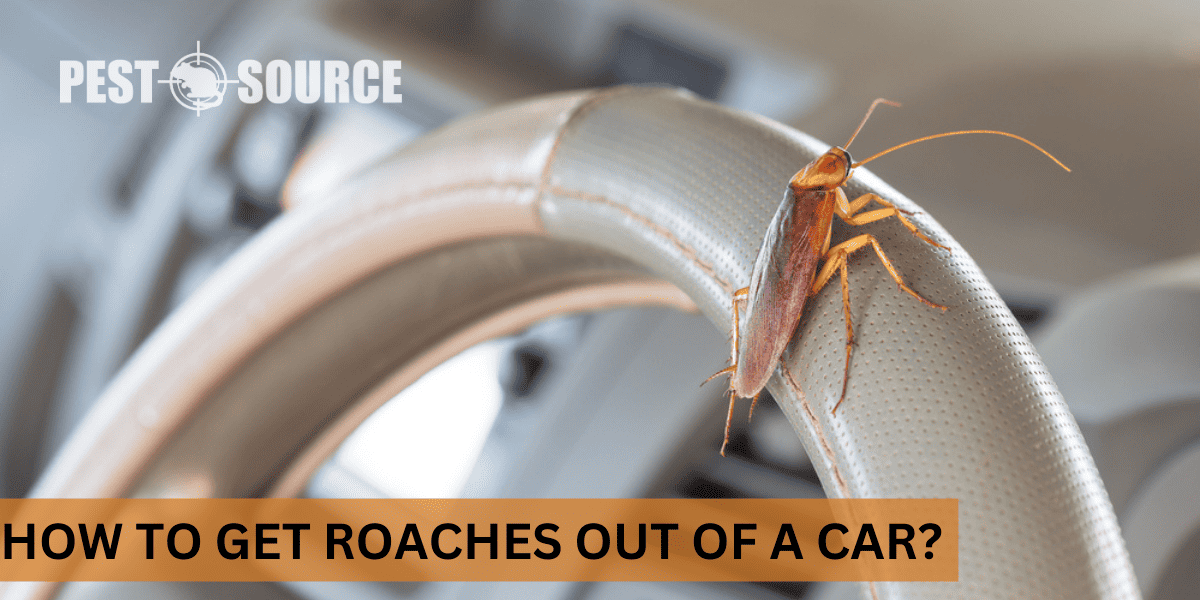Eliminating roaches from a car involves thorough cleaning, using baits and traps, and possibly insecticides. This guide provides a step-by-step approach to effectively rid your car of these persistent pests.
POINTS
- Maintain cleanliness in your car by regularly vacuuming and removing food scraps to prevent roach infestations.
- Use targeted treatments like roach bombs, sprays, and traps with safety in mind, ensuring proper ventilation and post-treatment cleanup.
- German roaches require specific treatments due to their resilience and rapid reproduction, necessitating a more aggressive approach.
- High temperatures alone are not a reliable method for killing roaches in a car, as they can find cooler spots to survive.
- Setting realistic expectations for the timeline of eradication is important, with ongoing monitoring and repeated treatments as necessary.
Recognizing Signs of a Roach Infestation in Your Car
Before you can tackle a roach problem, you need to be certain that you have one. Identifying a roach infestation involves looking for specific signs:
- Roach Droppings: Small, pepper-like specks near crevices or areas where food is consumed can be a clear indication.
- Eggs: Roach egg cases, also known as oothecae, are oblong and may be found in hidden areas within the car.
- Live or Dead Roaches: Spotting roaches during the day can signal a large infestation, as they are typically nocturnal.
Understanding How Roaches Get Into Cars and Preventing Reinfestation
Roaches may enter your car in search of warmth, shelter, and food. They can hitch a ride on grocery bags, personal items, or even migrate from infested areas nearby. To prevent reinfestation, consider the following:
- Maintain Cleanliness: Regularly vacuum your car and remove food scraps and stains.
- Seal Entry Points: Check for and seal any cracks or crevices where roaches could enter.
- Natural Deterrents: Use natural deterrents like bay leaves, cucumber slices, or essential oils known to repel roaches.
By understanding how roaches infiltrate vehicles and the factors that attract them, you can implement effective prevention strategies.
Effective Roach Control in Cars: Products, Safety, and Alternatives
When it comes to roach control in cars, you have several options:
- Roach Bombs: While effective, they require you to vacate the car for a period and can leave behind a residue.
- Sprays: Targeted sprays can be used on specific areas, but ensure proper ventilation and avoid inhaling fumes.
- Traps: Roach traps can be placed in various locations in your car and are a non-toxic option.
Safety is paramount when using these products. Always follow the manufacturer’s instructions and consider the following:
- Proper Ventilation: After using any product, air out your car thoroughly.
- Post-Treatment Cleanup: Dispose of any dead roaches and clean treated areas to prevent exposure to chemicals.
Natural alternatives, such as diatomaceous earth or boric acid, can also be used effectively and are less toxic options compared to traditional pesticides.
Special Considerations: German Roaches and High Temperature Myths
When dealing with roaches in your car, it’s crucial to understand the specific challenges posed by different species. German roaches, for instance, are notorious for their resilience and rapid reproduction rate. Here are some considerations for tackling these tenacious pests:
- Targeted Treatments: Use products specifically designed to combat German roaches, as they may be resistant to general roach treatments.
- Thorough Cleaning: Due to their prolific nature, a more aggressive cleaning and treatment regimen may be necessary.
In addition to species-specific concerns, there are also common myths to address. One such myth is that high temperatures can kill roaches in a car. While it’s true that extreme heat can be lethal to roaches, relying on this method alone is not effective because:
- Roaches can find cooler spots to hide and survive.
- The temperatures required to kill roaches would be unbearable and potentially damaging to your car’s interior.
Timeline and Expectations: Eradicating Roaches from Your Car
Eradicating roaches from your car is not an overnight task. Setting realistic expectations about the time frame for complete roach removal is important. Consider the following factors:
- Infestation Severity: A heavier infestation will take longer to fully eradicate.
- Treatment Methods: Some treatments may offer immediate relief, but may not reach all the roaches or their eggs.
For rapid solutions providing immediate relief:
- Vacuuming: A thorough vacuum can remove visible roaches and eggs.
- Spot Treatments: Immediate application of roach sprays can kill on contact.
However, these methods have limitations and may not reach the root of the infestation. Monitoring progress is essential to ensure thorough eradication. Keep an eye out for signs of roaches and repeat treatments as necessary, following safety guidelines each time.
How to Get Rid of Cockroaches in an Apartment?
To eradicate cockroaches in an apartment, maintain strict hygiene by cleaning up crumbs, spills, and avoiding standing water. Seal up any entry points, like cracks around windows or doors, with caulk. Employ cockroach baits and sticky traps strategically throughout the apartment, especially in dark and moist areas such as under the sink and behind the refrigerator. Apply insecticidal dust like boric acid in infested areas, taking care to keep it away from pets and children.



